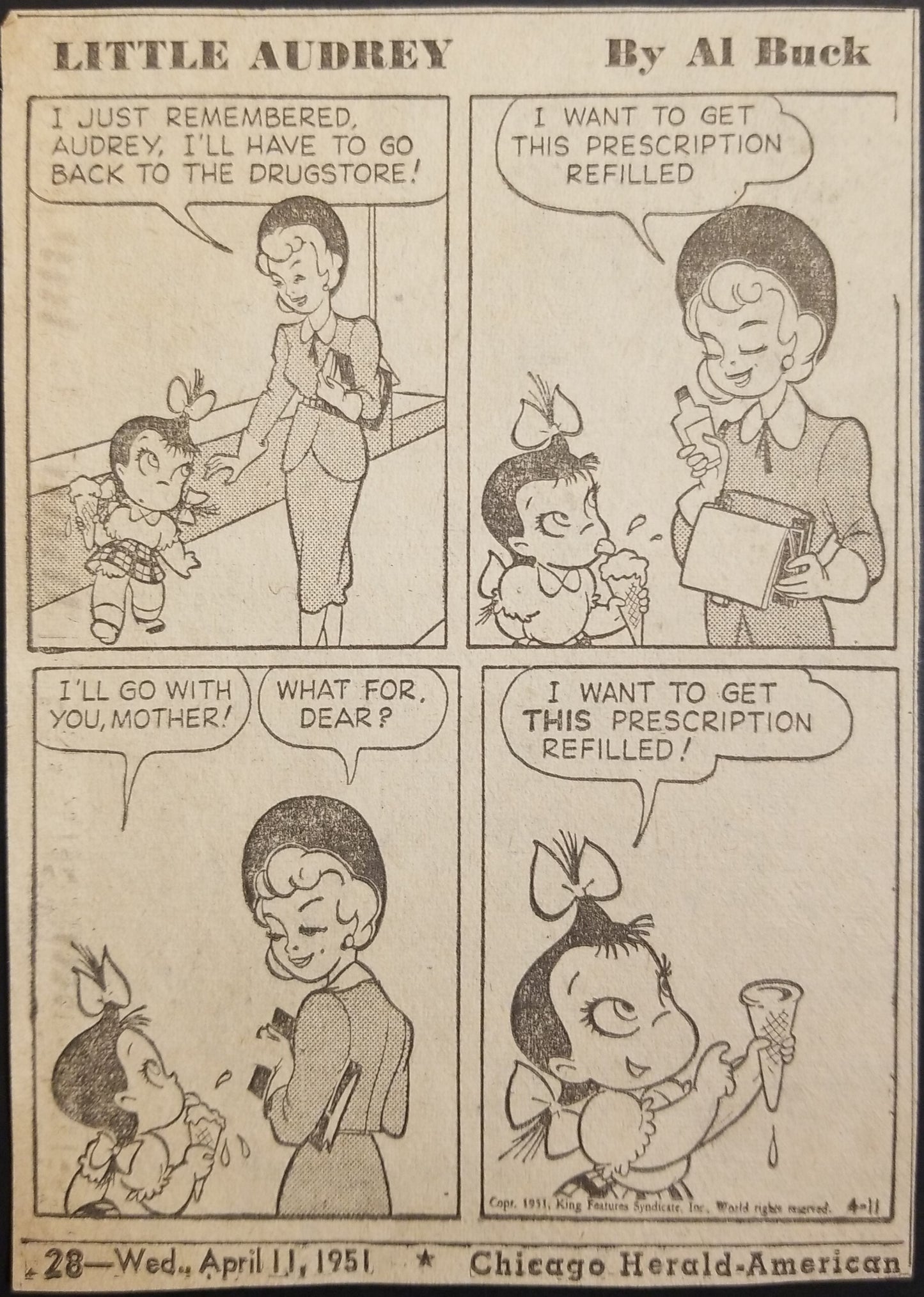History-Collectors.com
1951 Little Audrey Comic Strip - Al Buck - Chicago Herald American Newspaper - April 11 - 1950's Housewife Prescription Drug Epidemic Social Commentary
1951 Little Audrey Comic Strip - Al Buck - Chicago Herald American Newspaper - April 11 - 1950's Housewife Prescription Drug Epidemic Social Commentary
Couldn't load pickup availability
Vintage Original 1951 Little Audrey Comic Strip
Originally Created By Steve Muffatt
This Specific Comic Strip Is Credited To Al Buck
King Features Syndicate
Published April 11, 1951 - Chicago Herald-American Newspaper
Measures Approx. 3-7/8" Wide by 5-1/2" Tall
In Good Vintage Condition - Very Little Wear, Trimmed Edges From Newspaper, Some Paper Toning Due To Age And Watermarked That Is Not On The Comic Strip
"Little Audrey" emerged in 1947 from Famous Studios as a witty and charming cartoon character. She was created when the studio needed a new character similar to Little Lulu, whom they could fully own. With Steve Muffatti's creative direction, Audrey became a hit, known for her playful adventures and humorous antics. By 1951, the daily comic strip featured Al Buck's artwork, bringing Audrey's stories to newspapers. These comics were more than just fun; they often mirrored the real-life issues of the time, like the overuse of prescription drugs in American households. Today, "Little Audrey" is remembered not just for the laughs she brought, but also for what she revealed about life in the 1950s.
In the 1950s, the issue of prescription medication addiction among housewives garnered attention due to the widespread prescribing and use of tranquilizers and amphetamines. During this era, doctors often prescribed tranquilizers, such as Meprobamate (marketed as Miltown by 1955) and later Benzodiazepines (like Valium and Librium in the 1960s), to manage anxiety, stress, and depression, which were common complaints among housewives. These medications were seen as a quick and effective way to manage the pressures of domestic life and motherhood.
Additionally, amphetamines were prescribed for weight loss, which appealed to societal pressures on women to maintain a certain physique. These medications were marketed directly to women and were often prescribed without consideration of the potential for addiction or dependency.
The culture of the time, combined with a lack of understanding of the addictive nature of these substances, led to widespread use and, in some cases, addiction among housewives. It wasn't until later years that the addictive properties of these medications became more widely recognized and their prescribing practices came under scrutiny.
Share


